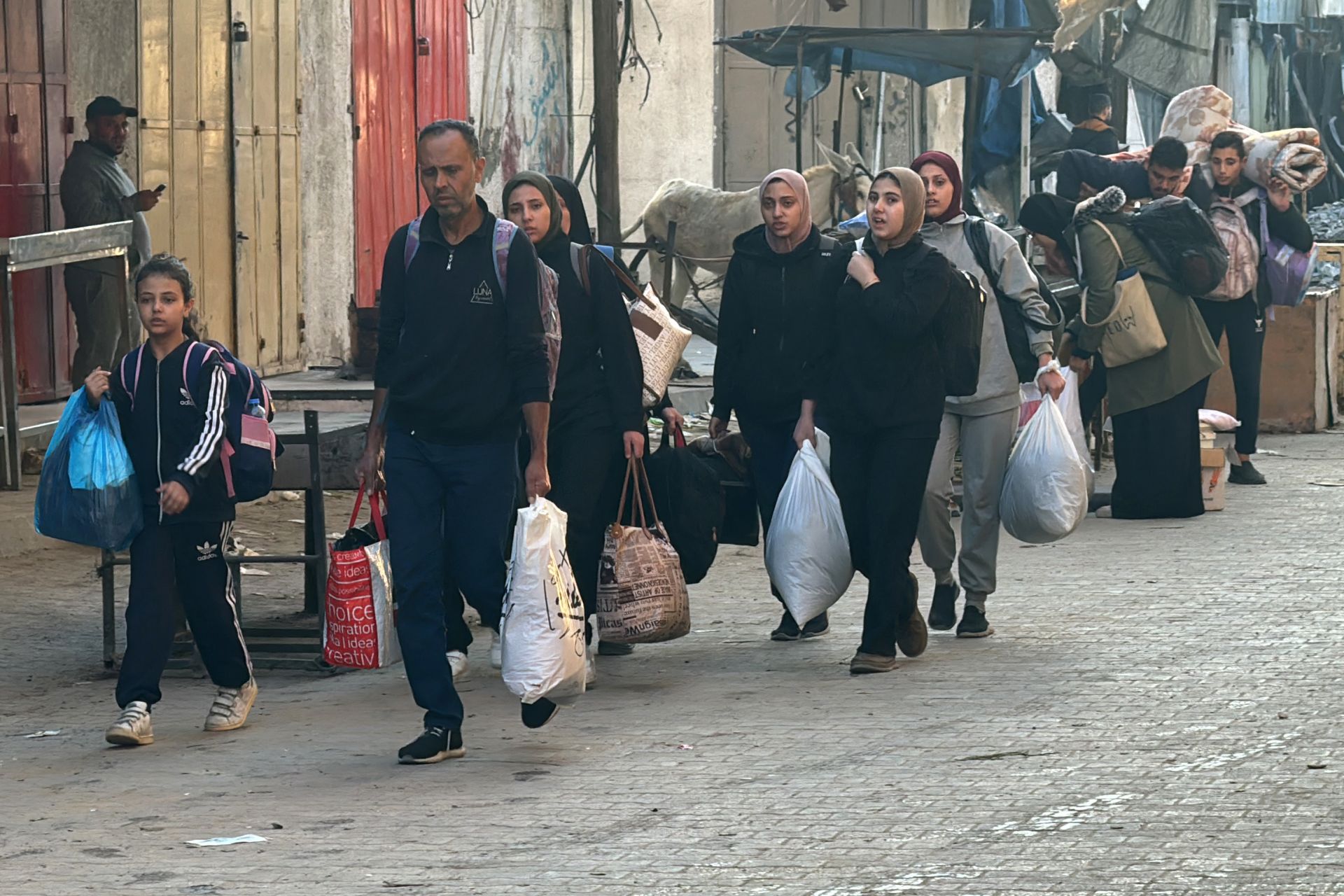- Home
- Middle East
- Poverty Rate Across Palestinian Territory Doubles in a Year

Palestinians walk down a street with their belongings after leaving their homes in Beit Lahia, in the northern Gaza Strip on October 22, 2024 ©Islam AHMED / AFP
The poverty rate across the Palestinian territories is projected to nearly double this year, reaching 74.3 percent after months of fighting in Gaza, according to a report by the UN Development Programme (UNDP) released on Tuesday.
"The immediate consequence of the war, not just in terms of physical infrastructure destruction, but also regarding poverty and the loss of livelihoods, is enormous," Achim Steiner, head of the UNDP, told AFP.
The poverty rate was 38.8 percent at the end of 2023, but an additional 2.61 million Palestinians have fallen into poverty this year, bringing the total to 4.1 million.
"It's quite clear from this socio-economic assessment that the level of destruction has set back the state of Palestine by years, if not decades, in terms of its development pathway," Steiner said.
The study estimates that this year, unemployment in the Palestinian territories could rise to 49.9 percent, and that GDP will be 35.1 percent lower than it would have been without the war in Gaza.
He noted that even if humanitarian aid is delivered each year, the Palestinian economy will not return to its pre-crisis levels for a decade or more.
Recovery will also require support to rebuild the destroyed capital and the lifting of "stifling economic conditions."
The study indicates that Israel's bombing campaign has generated 42 million tons of rubble in Gaza, creating major health risks. The destruction of solar panels is particularly dangerous due to the lead and other heavy metals they release.
The war in Gaza was triggered by Hamas's unprecedented attack on Israel on October 7 last year, which resulted in the deaths of 1,206 people, mostly civilians, according to an AFP tally of official Israeli figures.
Israel's bombing and ground offensives in Gaza have claimed the lives of 42,603 people, the majority of whom are civilians, according to data from the health ministry in the Hamas-run territory—figures that the UN considers reliable.
With AFP.
Read more



Comments